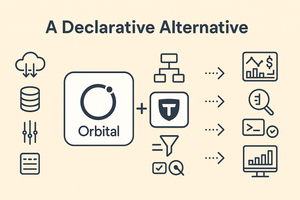What are Windsurf AI IDE and JetBrains' Junie?
Windsurf AI IDE is a standalone code editor designed to integrate with large language models. It's a fork of VS Code, so it shares the same look and feel. It supports multiple models and includes features like task planning, conversational editing, and terminal command execution.
JetBrains Junie is an AI assistant built into JetBrains IDEs. It interacts with your project files, code selections, and editor context, and supports multiple LLM providers.
The Test Prompts
I gave both tools the exact two instructions:
- “Write me a component for a React tag or pill”
- “Generate tests for the pill component”
Both tools were using Anthropic's Claude Sonnet 4 model, and I used the highest-tier licenses available.
Setup and Export
Windsurf immediately stood out with a Markdown export feature. Every step of the conversation, from plan to output, was traceable and human-readable. I could save the entire session locally, inspect the chain of reasoning, and review the evolution of the component and tests.
Junie doesn’t offer that yet. There’s an open feature request, but currently, there's no way to export the conversation. A history is saved somewhere (likely locally), but it’s not exposed in a useful way.
For me, this is a plus point for Windsurf IDE - exportability matters! Whether I’m archiving decisions, pairing with another engineer asynchronously, or auditing LLM behavior, traceability beats ephemeral UX.
Accuracy of Output: Same Model, Different Results
While both use Claude Sonnet 4, the experience diverged quickly:
| Dimension | Windsurf | Junie |
|---|---|---|
| Responsiveness | Faster, interactive | Noticeably slower |
| Component Output | Modular, clean, styled with variants | Functional but lacked polish |
| Test Coverage | 30+ tests (ARIA, edge cases, variants) | Narrower coverage, skipped some prop scenarios |
| Jest + Babel Errors | Resolved via conversational flow | Also resolved, but with more friction |
| Terminal Awareness | IDE listened to shell output, reacted live | More passive; didn’t always respond to errors |
While Junie did generate the full test lifecycle, including setup and correction, the road was bumpier. Windsurf seemed to “listen” to the terminal more actively and adapt in real-time, fixing issues or invalid config keys as they arose. Junie, while capable, sometimes needed more manual nudging between attempts, and the terminal instance required manual opening/input of selections.
Code Quality and Test Generation
- Windsurf’s output included:
- Full component with 7 color variants, 3 sizes, and ARIA support
- Full Jest setup with config, test environment, and 32 passing tests
- Clean separation of logic, styles, and usage examples
- A working
webpackdev preview with hot reload
- Junie’s output worked, but:
- Lacked dev preview setup
- Smaller test file with basic render and interaction coverage
- Included tests, but fewer edge cases and weaker accessibility checks
- Took more time to resolve Jest config errors and didn't auto-fix
--watchAllfallback
Both tools generated tests, but the paths were not identical. Both required some trial and error, but Windsurf made debugging feel more collaborative — its interactivity gave the impression that the assistant was “in the loop” with what I was doing.
While both tools worked, Windsurf felt more complete.
JSX vs. TSX
This wasn’t something I asked for, but it showed up anyway:
- Windsurf (Claude 4) returned JSX files
- Webstorm Junie (Claude 4) returned TSX files
- Webstorm Junie (Claude 3.5) returned JSX for the same prompt
No deeper point, just a detail that says a lot about how model behavior is shaped by context, environment, and scaffolding.
Debugging and Dev Setup
Windsurf is very terminal-aware.
When a script failed, it knew. When the Jest config broke, it fixed it. When Babel complained, it installed the right presets. Then it scaffolded a Webpack dev server with hot reload — no extra prompting needed.
Junie didn’t track terminal output as much.
It could fix things, but only after being explicitly asked. It didn’t observe CLI failures on its own. I had to interact with Junie and inform it, and only then would it react.
So while both tools technically got everything working, Windsurf felt like it was actively collaborating, while Junie felt like it was waiting for instructions.
Same Model, Different Scaffolding
This wasn’t about Claude Sonnet 4 – the LLM did what LLMs do. The difference was in how each tool primed it, listened to the output, and reacted when something broke.
Windsurf acted like a tool that knew it was in a dev environment. It anticipated the next steps. It paid attention.
Junie acted like an assistant living inside a larger system — capable, but disconnected unless explicitly plugged into each step.
Final Take
I didn’t go into this with expectations, but Windsurf surprised me — the quality of the output and the collaborative process were better than Junie's. While Junie got the job done, it needed more nudging, more follow-up, and more reminders that something had gone wrong.
Overall, both took a significant amount of time for a single React Component, so in practice, as the codebase grows, I don't see these tools getting faster, but rather slower.
Using either as a daily assistant is too time-consuming – if the response rate and time to completion were shorter, I could see each working similarly to a Junior Developer.
Build Results
Windsurf:
Windsurf Result - Codepen
JetBrains Junie:
Junie Result - Codepen
Google Antigravity, Amazon Kiro, and Anthropic Cursor
Google Antigravity
Amazon Kiro
Anthropic Cursor



